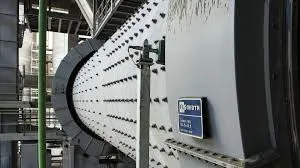The cement industry faces growing pressure in 2025 to reduce its carbon footprint and embrace more sustainable practices. As global climate commitments tighten and consumers become more environmentally conscious, manufacturers must re-evaluate every part of their production process—including one of its oldest and most trusted machines: the ball mill.
But here’s the real question:
Can ball mills be eco-friendly?
The answer lies in innovation, retrofitting, and integrating new technologies that significantly reduce energy consumption and CO2 emissions.
In this post, we’ll explore the environmental challenges of ball mills, smart retrofitting strategies, and why many forward-thinking plants are transitioning toward cleaner systems like the Tongli vertical roller mill, now available through Cementl.
Contents
The Environmental Cost of Cement Grinding
Grinding accounts for 40-70% of energy usage in a cement plant. And because traditional ball mill is inherently energy-hungry—relying on high-speed rotation and impact—it is often linked to excessive power consumption and indirect CO2 emissions.
Key Environmental Drawbacks of Ball Mills:
- High electricity demand (leading to fossil fuel-based emissions)
- Frequent part replacements increase the carbon footprint from manufacturing and shipping
- Lower grinding efficiency compared to newer technologies
Although ball mills are durable and time-tested, their carbon cost is high—unless we rethink how they operate.
Making Ball Mills Eco-Friendly: Retrofitting Solutions
The good news? You don’t have to scrap your entire system to become greener. Several retrofitting strategies can help you significantly reduce emissions without replacing the ball mill entirely.
1. Variable Frequency Drives (VFDs)
Installing a VFD lets operators adjust motor speed based on the required load. This not only saves energy but also reduces the heat generated during grinding.
- Estimated CO2 reduction: Up to 10–15%
- Bonus: Reduced mechanical stress extends machine lifespan
2. High-Efficiency Separators
Traditional separators are inefficient and cause over-grinding, wasting energy. Retrofitting with high-efficiency classifiers allows for:
- Finer particle size control
- Less recirculating material
- Reduced specific energy consumption
This can lower power usage by up to 25%, reducing both costs and CO2 emissions.
3. Smart Lubrication Systems
Friction losses waste a lot of energy. Retrofitting with smart lubrication systems helps minimize mechanical resistance and improves machine efficiency.
- Eco-benefit: Lower oil consumption and waste generation
4. Alternative Grinding Media
Switching from traditional steel balls to ceramic or high-chrome media can reduce wear and dust pollution.
- Fewer emissions from production and transport of new grinding media
- Reduced downtime means less energy used per ton of output
Considering a Bigger Leap? Enter Tongli Vertical Roller Mill
While retrofitting a ball mill helps, some cement plants are exploring next-generation technology like the Tongli vertical roller mill, sold by Cementl, to take sustainability to the next level.
Why Vertical Roller Mills Are More Eco-Friendly:
- Energy savings of up to 40% compared to ball mills
- Lower CO2 footprint due to reduced grinding time and improved efficiency
- No over-grinding, minimizing power waste
- Requires fewer wear parts, reducing material waste and replacement frequency
Real-World Impact:
Cement plants that transitioned to Tongli vertical roller mills reported:
- Reduced emissions by 20–30%
- Shorter startup times
- Easier integration with renewable energy sources like solar or wind
Cementl not only delivers this advanced equipment but also provides technical consultation and customized integration plans, making it easier to upgrade in phases.
What About Hybrid Systems?
Some plants combine retrofitted ball mills with a pre-grinding vertical roller mill, a solution known as hybrid grinding.
This approach:
- Retains existing infrastructure
- Uses the Tongli vertical roller mill for coarse grinding
- Uses the ball mill for fine finish grinding
The result? A balanced system with reduced energy consumption and a 15–20% cut in emissions.
Why It Matters in 2025
Cement plants today can no longer afford to ignore sustainability. Regulatory bodies are setting stricter emission limits. Green certifications influence buyer decisions. And operating sustainably is simply better for business and the planet.
Retrofitting your ball mill is a cost-effective way to lower emissions without disrupting operations. But for maximum impact, consider technologies like the Tongli vertical roller mill, available through Cementl, for a long-term transition toward low-carbon cement manufacturing.
Final Thoughts
So, can ball mills be eco-friendly?
Yes—with the right retrofitting strategies and complementary technologies.
Whether you choose to upgrade your existing ball mill with VFDs and efficient separators or go a step further with Tongli vertical roller mills, the future of green cement grinding starts now. Cementl is here to help you make that transition smoother, smarter, and more sustainable.


